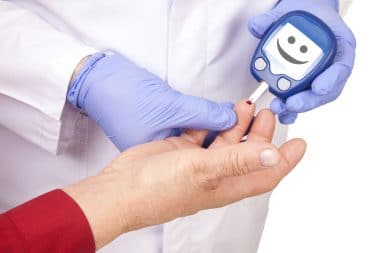The word diabetes is a familiar one with most people. Unfortunately, its familiarity stems from the fact that so many people have been afflicted with this disease. The World Health Organization (WHO) estimates that nearly 180 million people worldwide have diabetes. If current trends continue, by the year 2010, there will be nearly 250 million diabetics around the world.
The disease is characterized by the body’s impaired ability or failure to process glucose (a form of sugar) in the bloodstream because of the lack / absence of insulin. Insulin is a hormone produced in the pancreas that processes blood sugar into a form that the cells in the body can use for energy.
Without the proper processing of sugar, the body either becomes hyperglycemic (too much sugar) or hypoglycemic (too little sugar). Both are dangerous as it can make the body react in any number of ways such as weakened kidneys, impaired nervous system, loss of sight and in some extreme cases, coma.
Diabetes takes on two kinds of forms, and they differ from each other primarily through the means by which the disease is contracted.
The first type of diabetes (Type I) is contracted genetically. Most of the patients of this type are boys and girls of around 15 years old. It is because of this trend that experts have interchanged the term Type I diabetes with Juvenile Onset Diabetes.
The disease works by fooling the body’s immune system into thinking that the cells responsible for producing insulin are harmful. The islets of Langerhans (as these cells are called) are attacked by the immune system, rendering the islets unable to produce the necessary hormone to process blood sugar.
Diabetics of this type need to have insulin administered regularly into their system. As of now, the most common method for delivering the hormone is through injections. Other delivery systems are also being developed, the most recent of which is an oral spray that eliminates the need for hypodermic needles. This measure simply manages the condition but does not fully address the problem of curing it.
Short of a pancreas transplant, there is no cure for Type I diabetes. And even then, the risks are considerable making anyone think twice before undergoing the procedure. This is because transplanted organs run the risk of being rejected by the recipient’s body even if blood types match.
However, should the transplant prove successful, the diabetic may no longer have the need to have insulin artificially introduced into his / her body. A trade off exists in that in order to prevent organ rejection, the patient will have to take immuno-suppressive drugs throughout their lifetime, which may make him / her more susceptible to infections than usual.
Even then, most patients who have undergone the procedure say that it is a price they are willing to pay in exchange for a life free of needles and in fear of the complications the disease brings.
Of the total number of cases of diabetes worldwide, Type II accounts for more than 90 percent. Until recently, Type II diabetes was also called Adult Onset Diabetes, with the average age of a symptomatic patient around 40 years of age. But the increasing number of cases of children acquiring this type of the disease has led experts into setting this term aside.
Type II diabetes is characterized by the body’s impaired ability / failure to process sugar despite the presence of insulin-producing cells. The pancreas cannot keep up with the demand to produce enough insulin to process sugar in the body.
The cause for Type II diabetes is a lot less ominous than the first one. Whereas Type I is genetic, where the patient has no control over it, the second type of diabetes is usually brought about by a lifestyle of poor eating and exercise habits.
Doctors and research scientists alike are finding more and more the direct proportion of obesity to Type II diabetes. Findings show that overweight and obese individuals are very likely to contract the disease and their chances of succumbing to the complications brought by the disease increase significantly.
This is perhaps what makes Type II diabetes such an alarming situation. Many experts feel that the number of people (over 160 million) living with this disease need not be as great had they observed proper diet and exercise.
To manage the disease, Type II diabetics are instructed to exercise regularly, limit their carbohydrate and sugar intake and when absolutely necessary, have insulin administered artificially.
More research is done to resolve the disease and each step brings medicine closer to a solution. But for now the good news lies in that with proper care and observance of the instructions, a diabetic of either the first or second type can still live a full and productive life.






Reply